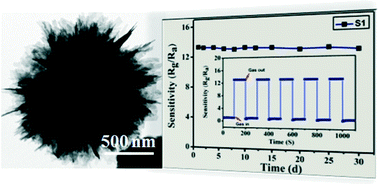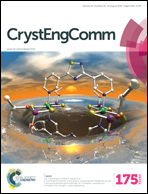Three-dimensional hierarchical Co3O4 nano/micro-architecture: synthesis and ethanol sensing properties†
Abstract
Recently, spinel cobalt oxide (Co3O4) nanostructure has received great interest because of its enhanced gas sensing properties and it offers many opportunities in the sensing field. In the research reported in this paper, spinel Co3O4 compounds with various morphologies were prepared by a simple solvothermal process and then applied for gas detection. The structure, morphology and surface characteristics of the as-obtained products were characterized using X-ray diffraction, X-ray photoelectron spectroscopy, scanning electron microscopy, transmission electron microscope, Brunauer–Emmett–Teller and inductively coupled plasma mass spectrometry analysis. These analyses revealed that the morphologies of the Co3O4 nanostructures could be accurately controlled by employing different solvents. To highlight their potential application, gas sensors based on the as-synthesized products were fabricated to test their sensing performances. The test data indicated that the needle-shaped Co3O4 compounds had a superb kinetic response and excellent selectivity towards some pollutant volatile organic compounds at an operating temperature of 170 °C, especially ethanol. As such, these hierarchical Co3O4 needle-shaped microspheres are a promising candidate for a high-performance gas sensing material.


 Please wait while we load your content...
Please wait while we load your content...